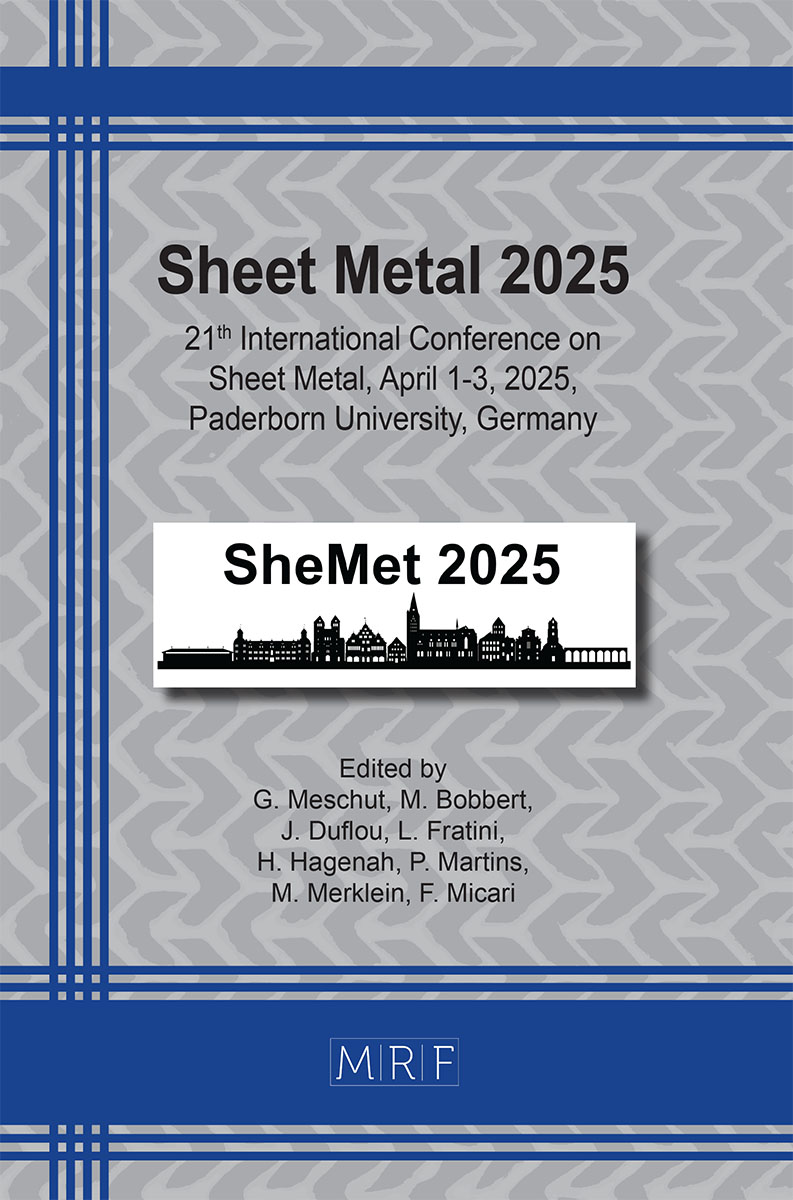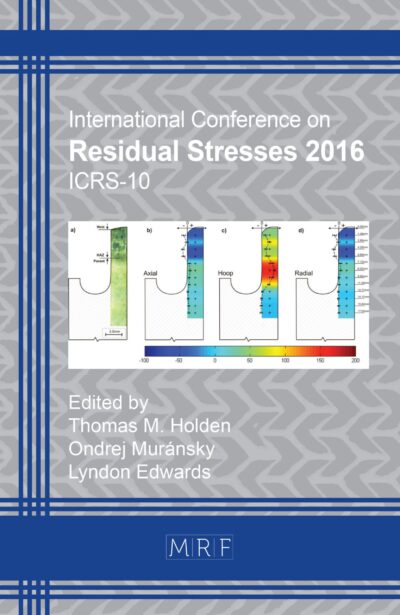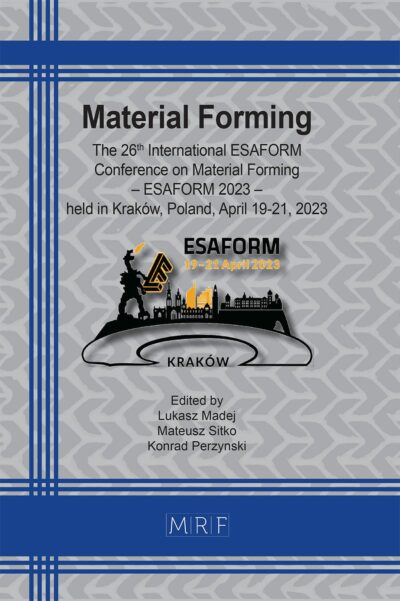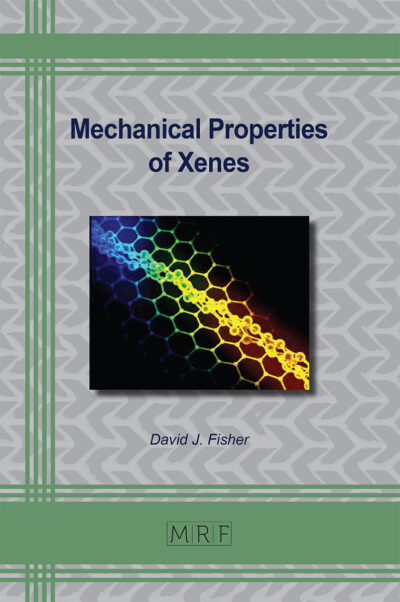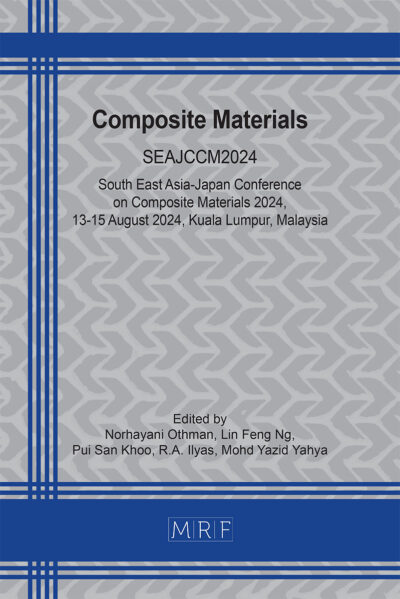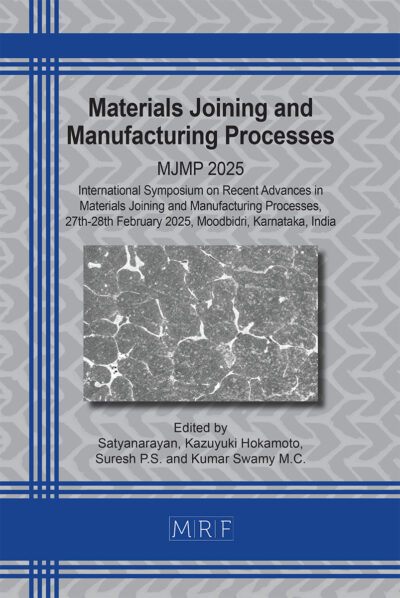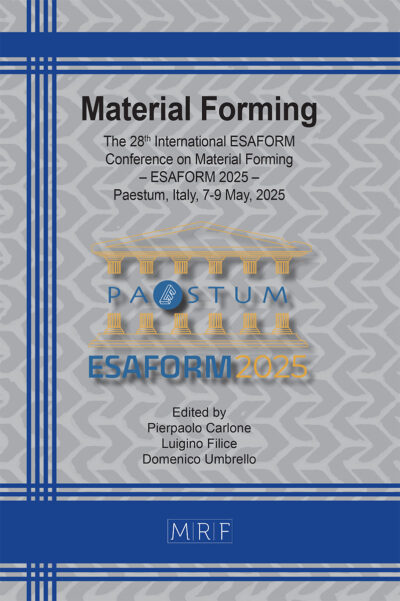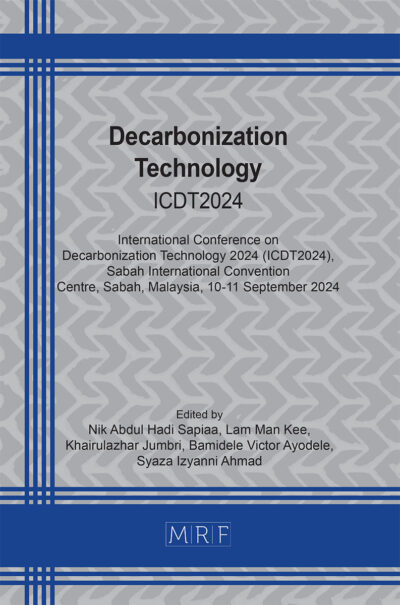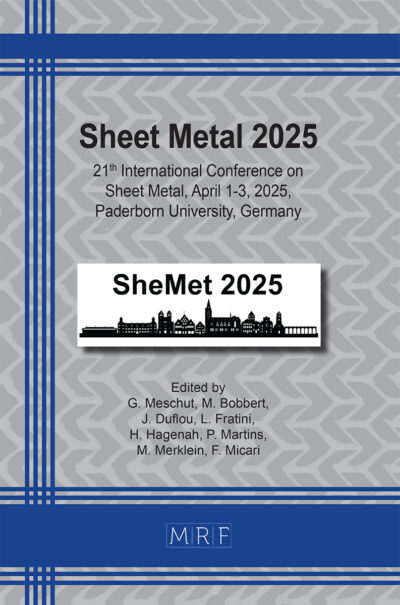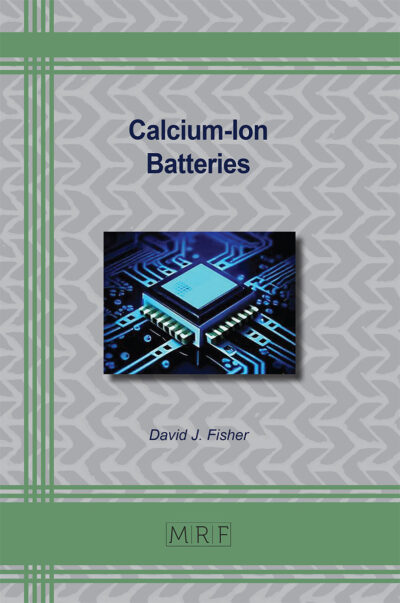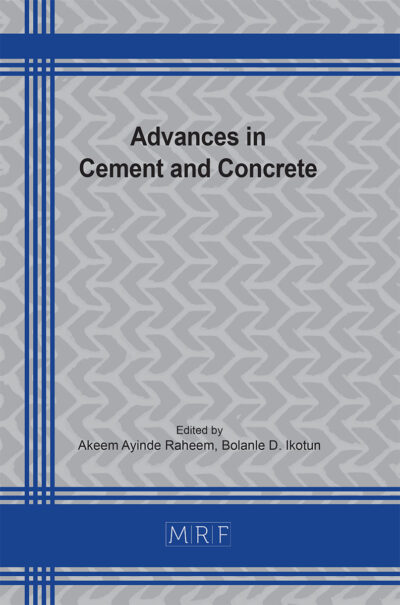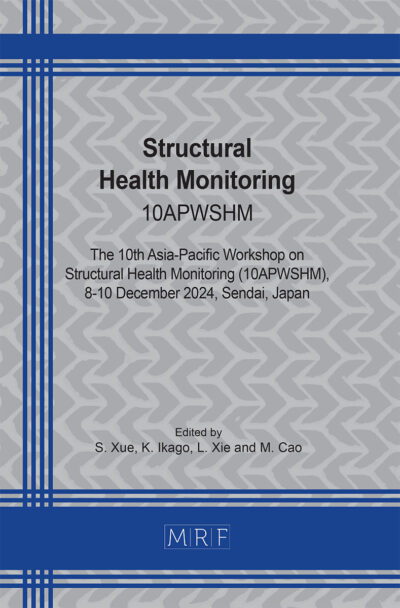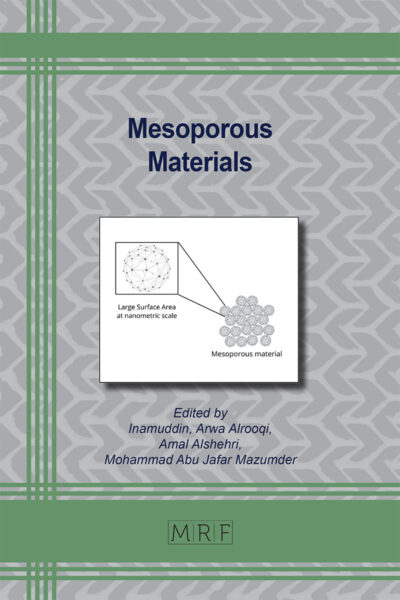High-cycle fatigue testing and parameter identification for numerical simulation of aluminum alloy EN AW-6014
Chin Chen, Malte Christian Schlichter, Sven Harzheim, Martin Hofmann, Mathias Bobbert, Gerson Meschut, Thomas Wallmersperger
Abstract. As a widely used sheet metal in clinched joints within the automotive industry, the aluminum alloy EN AW-6014 has been the focus of numerous studies. High-cycle fatigue (HCF) is a critical aspect when assessing the durability of clinched joints. In the present work, the HCF behavior of EN AW-6014 T4 was explored both experimentally and numerically. To model the fatigue behavior, Lemaitre’s two-scale damage model was used. Two key parameters, damage strength and damage exponent, are necessary for numerical investigations of HCF behavior. These parameters were determined through experiments with flat specimens and subsequently validated within a numerical model of clinched joints. The numerical results for fatigue match the experimental ones of the clinched joints quite well.
Keywords
Fatigue, Numerical Simulation, Clinched Joints
Published online 4/1/2025, 8 pages
Copyright © 2025 by the author(s)
Published under license by Materials Research Forum LLC., Millersville PA, USA
Citation: Chin Chen, Malte Christian Schlichter, Sven Harzheim, Martin Hofmann, Mathias Bobbert, Gerson Meschut, Thomas Wallmersperger, High-cycle fatigue testing and parameter identification for numerical simulation of aluminum alloy EN AW-6014, Materials Research Proceedings, Vol. 52, pp 184-191, 2025
DOI: https://doi.org/10.21741/9781644903551-23
The article was published as article 23 of the book Sheet Metal 2025
![]() Content from this work may be used under the terms of the Creative Commons Attribution 3.0 license. Any further distribution of this work must maintain attribution to the author(s) and the title of the work, journal citation and DOI.
Content from this work may be used under the terms of the Creative Commons Attribution 3.0 license. Any further distribution of this work must maintain attribution to the author(s) and the title of the work, journal citation and DOI.
References
[1] Gao, T., Sun, Z., Xue, H., & Retraint, D. (2020). Effect of surface mechanical attrition treatment on high cycle and very high cycle fatigue of a 7075-T6 aluminium alloy. International Journal of Fatigue, 139, 105798. https://doi.org/10.1016/j.ijfatigue.2020.105798
[2] Farfan, S., Rubio-Gonzalez, C., Cervantes-Hernandez, T., & Mesmacque, G. (2004). High cycle fatigue, low cycle fatigue and failure modes of a carburized steel. International Journal of Fatigue, 26(6), 673-678. https://doi.org/10.1016/j.ijfatigue.2003.08.022
[3] Cowles, B. A. (1996). High cycle fatigue in aircraft gas turbines-an industry perspective. International Journal of Fracture, 80, 147-163. https://doi.org/10.1007/BF00012667
[4] Wöhler, A. (1870). Über die Festigkeitsversuche mit Eisen und Stahl. Ernst & Korn.
[5] Schijve, J. (2003). Fatigue of structures and materials in the 20th century and the state of the art. International Journal of Fatigue, 25(8), 679-702. https://doi.org/10.1016/S0142-1123(03)00051-3
[6] Lemaitre, J., Sermage, J. P., & Desmorat, R. (1999). A two scale damage concept applied to fatigue. International Journal of Fracture, 97, 67-81. https://doi.org/10.1023/A:1018641414428
[7] Roters, F., Eisenlohr, P., Bieler, T. R., & Raabe, D. (2011). Crystal plasticity finite element methods: in materials science and engineering. John Wiley & Sons. https://doi.org/10.1002/9783527631483
[8] Cole, G. S., & Sherman, A. M. (1995). Light weight materials for automotive applications. Materials Characterization, 35(1), 3-9. https://doi.org/10.1016/1044-5803(95)00063-1
[9] Troeger, L. P., & Starke Jr, E. A. (2000). Microstructural and mechanical characterization of a superplastic 6xxx aluminum alloy. Materials Science and Engineering: A, 277(1-2), 102-113. https://doi.org/10.1016/S0921-5093(99)00543-2
[10] Kupfer, R., Köhler, D., Römisch, D., Wituschek, S., Ewenz, L., Kalich, J., … & Troschitz, J. (2022). Clinching of aluminum materials-methods for the continuous characterization of process, microstructure and properties. Journal of Advanced Joining Processes, 5, 100108. https://doi.org/10.1016/j.jajp.2022.100108
[11] Harzheim, S., Hofmann, M., & Wallmersperger, T. (2023). Numerical fatigue life prediction of corroded and non-corroded clinched joints. Mechanics of Advanced Materials and Structures, 30(5), 961-966. https://doi.org/10.1080/15376494.2022.2140233
[12] Schramm, B., Harzheim, S., Weiß, D., Joy, T. D., Hofmann, M., Mergheim, J., & Wallmersperger, T. (2022). A review on the modeling of the clinching process chain-part III: operational phase. Journal of Advanced Joining Processes, 6, 100135. https://doi.org/10.1016/j.jajp.2022.100135
[13] OH, B. (1910). The exponential law of endurance tests. In Proc Am Soc Test Mater (Vol. 10, pp. 625-630).
[14] Martin, A., Hinkelmann, K., & Esderts, A. (2011). Zur Auswertung von Schwingfestigkeitsversuchen im Zeitfestigkeitsbereich-. Materials Testing, 53(9), 502-512. https://doi.org/10.3139/120.110255
[15] Kröner, E. (1961). Zur plastischen Verformung des Vielkristalls. Acta Metallurgica, 9(2), 155-161. https://doi.org/10.1016/0001-6160(61)90060-8
[16] Eshelby, J. D. (1957). The determination of the elastic field of an ellipsoidal inclusion, and related problems. Proceedings of the royal society of London. Series A. Mathematical and Physical Sciences, 241(1226), 376-396. https://doi.org/10.1098/rspa.1957.0133
[17] Lemaitre, J., & Doghri, I. (1994). Damage 90: a post processor for crack initiation. Computer Methods in Applied Mechanics and Engineering, 115(3-4), 197-232. https://doi.org/10.1016/0045-7825(94)90060-4
[18] VDEh, Stahlinstitut. “Prüf-und Dokumentationsrichtlinie für die experimentelle Ermittlung mechanischer Kennwerte von Feinblechen aus Stahl für die CAE-Berechnung.” Stahl Eisen Prüfblatt SEP1240 1 (2006).
[19] DVS – Deutscher Verband für Schweißen und verwandte Verfahren e.V. Merkblatt DVS/EFB 3420: Clinching – basics. 2021.
[20] Friedlein, J., Wituschek, S., Lechner, M., Mergheim, J., & Steinmann, P. (2021, June). Inverse parameter identification of an anisotropic plasticity model for sheet metal. In IOP Conference Series: Materials Science and Engineering (Vol. 1157, No. 1, p. 012004). IOP Publishing. https://doi.org/10.1088/1757-899X/1157/1/012004
[21] Bielak, C. R., Böhnke, M., Beck, R., Bobbert, M., & Meschut, G. (2021). Numerical analysis of the robustness of clinching process considering the pre-forming of the parts. Journal of Advanced Joining Processes, 3, 100038. https://doi.org/10.1016/j.jajp.2020.100038
[22] Ewenz, L., Bielak, C. R., Otroshi, M., Bobbert, M., Meschut, G., & Zimmermann, M. (2022). Numerical and experimental identification of fatigue crack initiation sites in clinched joints. Production Engineering, 16(2), 305-313. https://doi.org/10.1007/s11740-022-01124-z

